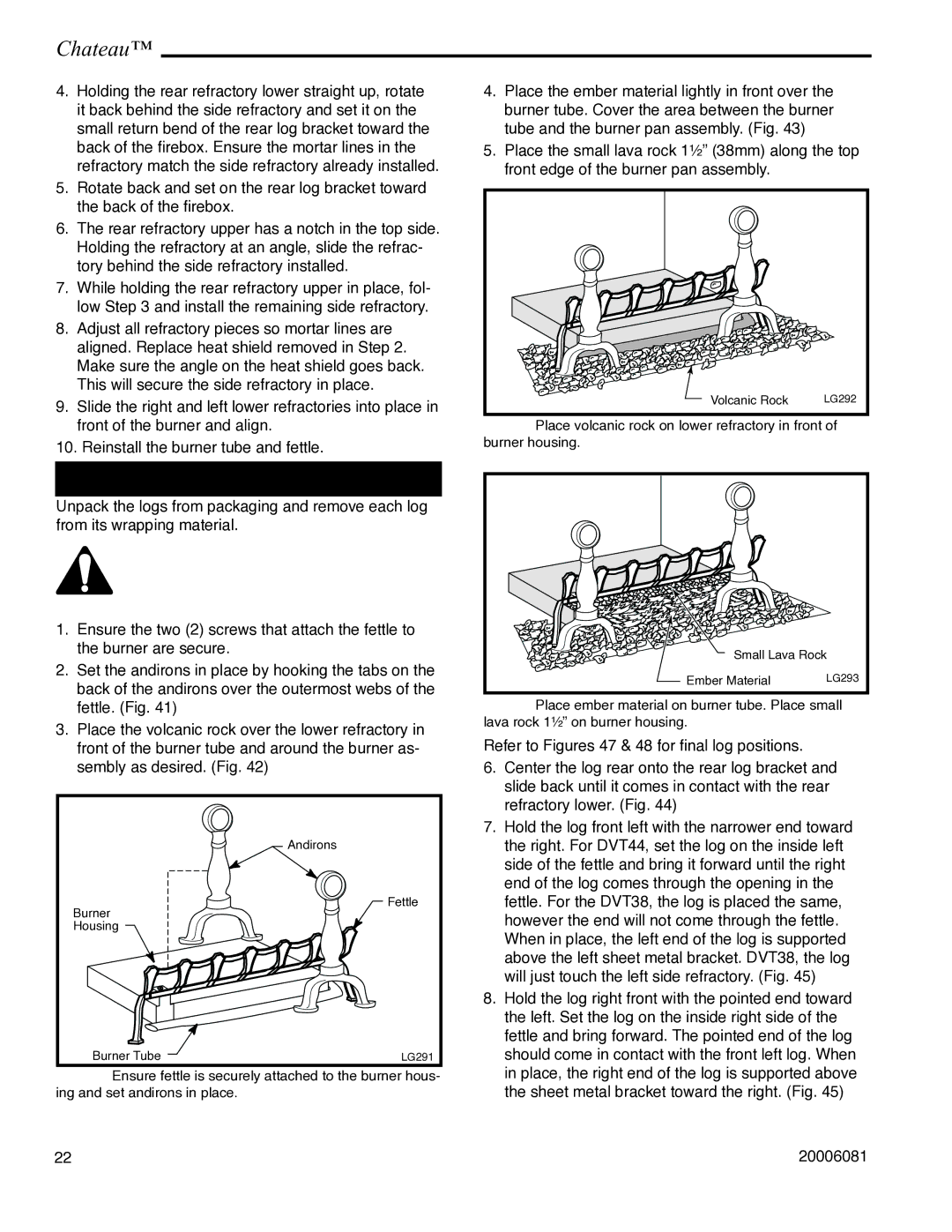DVT38 specifications
The Vermont Casting DVT38 is a standout model in the realm of contemporary gas fireplaces, epitomizing both innovative engineering and aesthetic elegance. Designed with a focus on efficiency and style, the DVT38 offers homeowners an exceptional heating experience while enhancing the ambiance of their living spaces.One of the main features of the Vermont Casting DVT38 is its impressive heat output. With a BTU range that ensures warmth for larger areas, the fireplace is capable of efficiently heating spaces without consuming excessive fuel. This is a critical aspect for homeowners seeking both comfort and energy savings. The fireplace integrates a dual burner system, promoting a uniform heat distribution and ensuring that every corner of the room enjoys consistent warmth.
Another notable characteristic of the DVT38 is its advanced burner technology. The unique burner design allows for a natural gas or propane option, giving consumers flexibility based on availability and preference. The adjustable flame settings enable users to customize the heat output and ambiance, perfect for both cozy winter evenings and social gatherings.
In terms of aesthetics, the Vermont Casting DVT38 boasts a sophisticated design that complements various interior styles. It features large glass viewing areas which present a captivating flame pattern, enhancing the visual appeal of the unit. The contemporary facade can be finished with a variety of trims and options, allowing homeowners to tailor the fireplace to their personal décor.
The DVT38 is also equipped with an easy-to-use electronic ignition system, further simplifying the operation. This feature ensures that lighting the fireplace is hassle-free, eliminating the need for matches or manual lighting. Additionally, many models come with a remote control option, allowing users to adjust settings from a distance, thereby enhancing convenience and usability.
Moreover, the DVT38 is built with durability in mind, incorporating high-quality materials that withstand the test of time while providing a reliable heating solution. Vermont Castings is renowned for its commitment to craftsmanship, and this model exemplifies that ethos.
In summary, the Vermont Casting DVT38 is an exquisite blend of functionality and design. With efficient heating capabilities, cutting-edge technology, and customizable aesthetics, it stands out as a premier choice for anyone looking to elevate their home heating experience. Whether for warmth or ambiance, the DVT38 is engineered to deliver satisfaction for years to come.

